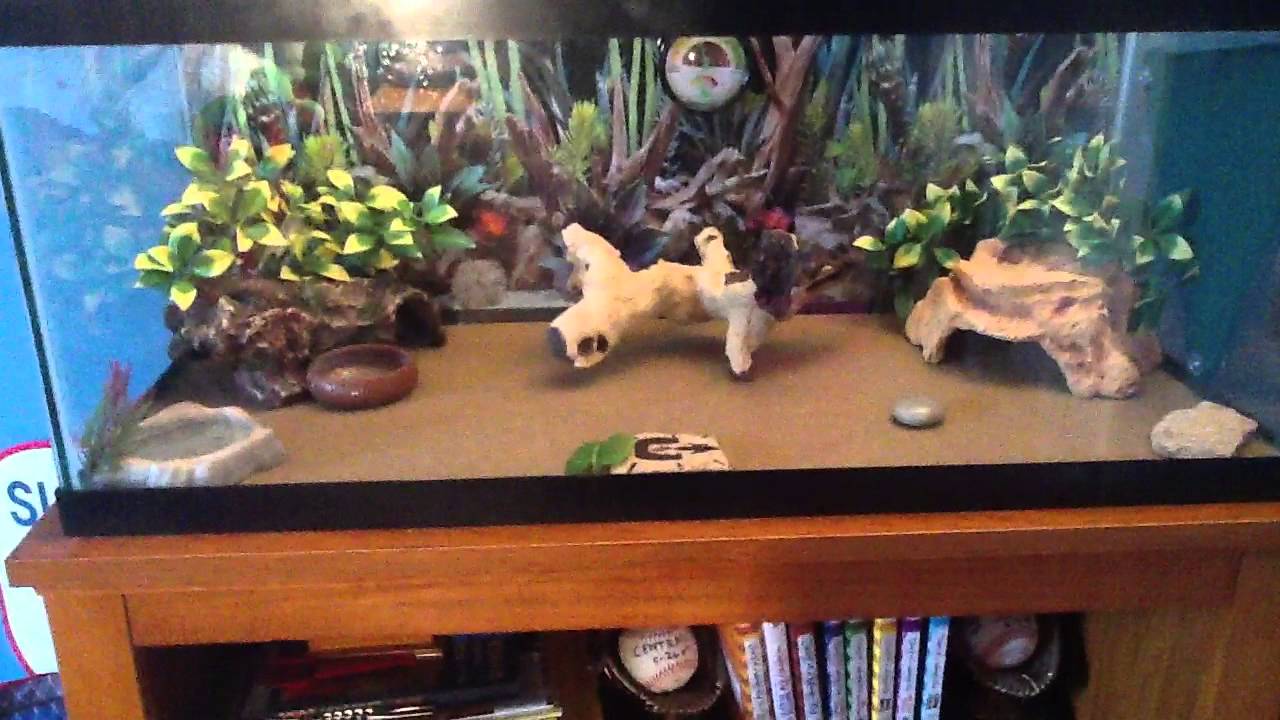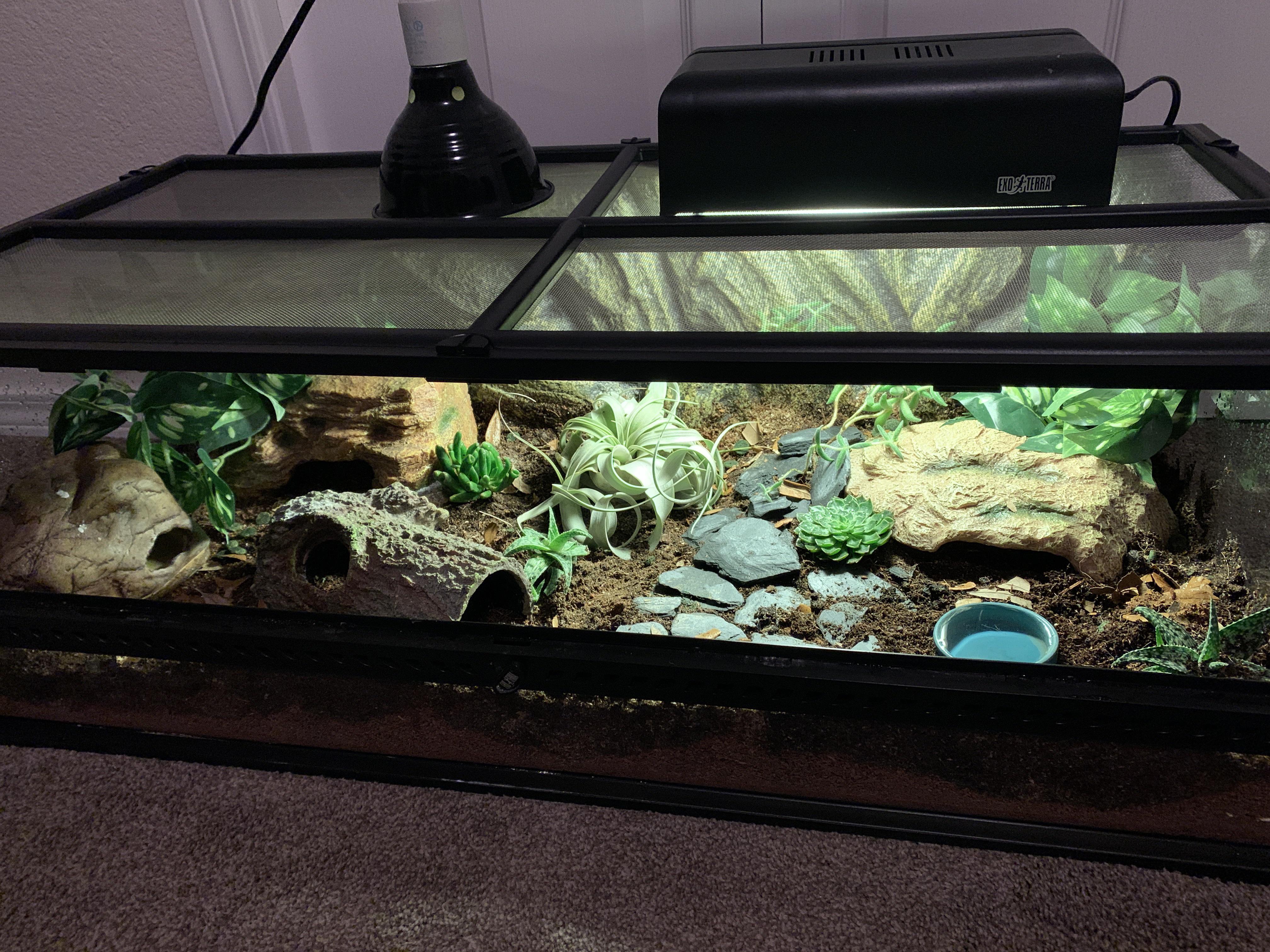Owning a leopard gecko can be an incredibly rewarding experience. Leopard geckos are docile, handleable reptiles that make great pets. However, proper husbandry is essential to keeping your leopard gecko healthy and happy. One of the most important aspects of leopard gecko care is setting up an appropriate habitat. Here is an in-depth guide on how to set up a leopard gecko tank.
Selecting an Enclosure

The first step is selecting an appropriate enclosure for your leopard gecko. There are a few options:
- Glass tanks: Standard aquariums can work well for leopard geckos. Aim for a tank that is at least 20 gallons for one gecko. Generally, bigger is better.
- Plastic terrariums: There are terrariums designed specifically for reptiles that often have front-opening doors. These are lightweight and come in different sizes.
- Custom built enclosures: You can also have an enclosure custom built out of wood or melamine. These allow you to make any size enclosure.
I recommend an enclosure at least 30 inches long and 12-18 inches wide for one leopard gecko. Make sure the enclosure is escape proof with a tight-fitting lid.
Choosing Substrate
Substrate refers to the flooring material inside the tank. Avoid loose substrates like sand or gravel that can cause impaction if ingested. Good options include:
- Reptile carpeting
- Paper towels
- Slate or ceramic tiles
- Reptile-friendly shelf liner
I recommend tile or paper towels for simplicity. Spot clean waste and replace paper towels frequently. Disinfect tiles weekly.
Setting Up Hide Boxes

Leopard geckos are crepuscular, meaning they are most active at dawn and dusk. They need places to hide during the day and at night. Provide at least three hide boxes:
- Warm humid hide on the hot side
- Cool dry hide on the cool side
- Moist hide in the middle
You can buy reptile hides or use plastic food containers with an entrance hole cut out. The warm hide should be over the heat mat (more on this later). I recommend coco husk substrate and sphagnum moss in the humid hide to aid shedding.
Heating and Lighting
There are two main aspects of heating and lighting:
Belly heat: Leopard geckos are ectothermic and rely on external heat sources to regulate their body temperature. Provide concentrated belly heat with an under tank heating pad covering 1/3 of the tank floor. Use a thermostat to keep the pad at 90°F.
Overhead heating: Overhead heating lights are optional but can provide ambient temperatures during the day. Use a low wattage bulb ≤60 watts. Keep the overall enclosure temperature between 77-88°F during the day and 70-75°F at night.
UVB lighting: Recent research indicates UVB lighting is beneficial for leopard geckos. It aids calcium metabolism and prevents diseases like metabolic bone disease. Use low percentage UVB output bulbs specifically for terrariums 12-14 hours per day.
Essential Supplies
Here are some must-have supplies for your leopard gecko setup:
- Thermometer/hygrometer to monitor temperatures
- Vitamin and calcium supplements
- Mealworm dish
- Water bowl
- Reptile-safe antibacterial cleaning spray
- Handling gloves
Spot clean the tank daily by removing soiled substrate. Thoroughly disinfect the tank monthly. Provide a variety of appropriate sized feeder insects and fresh water. Make sure to supplement with calcium and vitamins.
Decorating the Habitat
While leopard geckos don’t require lots of enrichment, you can add decor to create visual interest. Good options include:
- Artificial plants and vines
- Cork bark
- Rocks
- Reptile hammocks
- Climbing branches
Avoid anything with sharp edges or loose parts that could injure your gecko. Keep decor sparse enough for easy cleaning and tank maintenance.
Setting Up a Happy Home

With the proper setup, you can create an ideal habitat for your leopard gecko to thrive. The essentials include an appropriately sized tank, belly heat, hide boxes, lighting, cage furnishings and cleaning supplies. Monitor temperatures carefully. Keep the substrate clean and provide enrichment opportunities. With the right environment and care, your leopard gecko will live a long, healthy life! Let me know if you have any other questions on setting up the perfect leopard gecko tank.
Conclusion
Setting up the proper enclosure is one of the most important aspects of keeping a leopard gecko. Follow these steps to create a habitat that meets all of your leopard gecko’s needs. Key points include an adequately sized tank, appropriate substrate, ample hide boxes, reliable heating and lighting elements, essential supplies and habitat decor. Monitor temperatures and clean the enclosure regularly. A well-designed habitat will keep your leopard gecko comfortable and healthy for years to come. With the right setup, you’ll both be able to enjoy this wonderful pet reptile.
FAQs About How to Set Up A Leopard Gecko Tank
How should I arrange hides and decor in the gecko’s tank?
Arrange hides and decor in the gecko’s tank to create a secure and enriching environment. Place at least two hides on each side of the enclosure to accommodate their temperature preferences. Use various sizes and shapes of hides, rocks, and branches for climbing and exploration, ensuring they are stable and safe.
What should I include in the gecko’s tank for enrichment?
To enrich your gecko’s tank, add items like branches, fake plants, and textured surfaces for climbing. Include a shallow dish of calcium powder for them to self-regulate their calcium intake. You can also introduce non-toxic, easy-to-clean decorations that encourage exploration and natural behaviors.
Do I need a water dish in the enclosure, and how should I maintain it?
Yes, a shallow water dish is essential in the enclosure. Maintain it by providing clean, dechlorinated water. Ensure the dish is stable and shallow to prevent drowning. Regularly check and refill it to keep your gecko hydrated. Clean and sanitize the dish during regular tank maintenance to prevent bacterial growth.
How often should I clean and sanitize a leopard gecko’s tank?
Clean and sanitize the gecko’s tank regularly. Remove feces, shed skin, and uneaten food daily. Replace substrate monthly or as needed. Perform a deep cleaning every 3-4 months, removing all decor, cleaning the enclosure, and replacing substrate. This prevents odor, mold, and bacterial issues.
What should I consider when selecting plants or decor for the tank?
When selecting plants or decor, choose items that are safe, easy to clean, and non-toxic. Artificial plants are often preferred because they don’t require maintenance and won’t affect humidity levels. Avoid sharp or small objects that could harm your gecko, and ensure all decor is securely placed to prevent accidents.



